The Art of the Japanese New Year Card
From the 1900s through 1930s Japan's artists created trailblazing New Year cards
Old Photos of Japan is a community project aiming to a) conserve vintage images, b) create the largest specialized database of Japan’s visual heritage between the 1850s and 1960s, and c) share research. All for free.
If you can afford it, please support Old Photos of Japan so I can build a better online archive, and also have more time for research and writing.
A stunning New Year card for Gifu’s Great Exhibition of Rapid Japanese Progress of 1936. During the 1900s–1930s, many Japanese New Year cards were designed by top artists who created a golden age of card design.
Japan has a unique nengajō (年賀状, New Year card) culture.1 A rigorous delivery system allows the Japanese postal service to dutifully deliver nengajō exactly on New Year’s Day — as long as they have been posted before a certain date.
If a card is received from someone that one has not sent a card, it can be rectified by sending that person a card back on the same day. Mail carriers deliver these two days later, on January 3, the last day of Japan’s New Year celebrations.
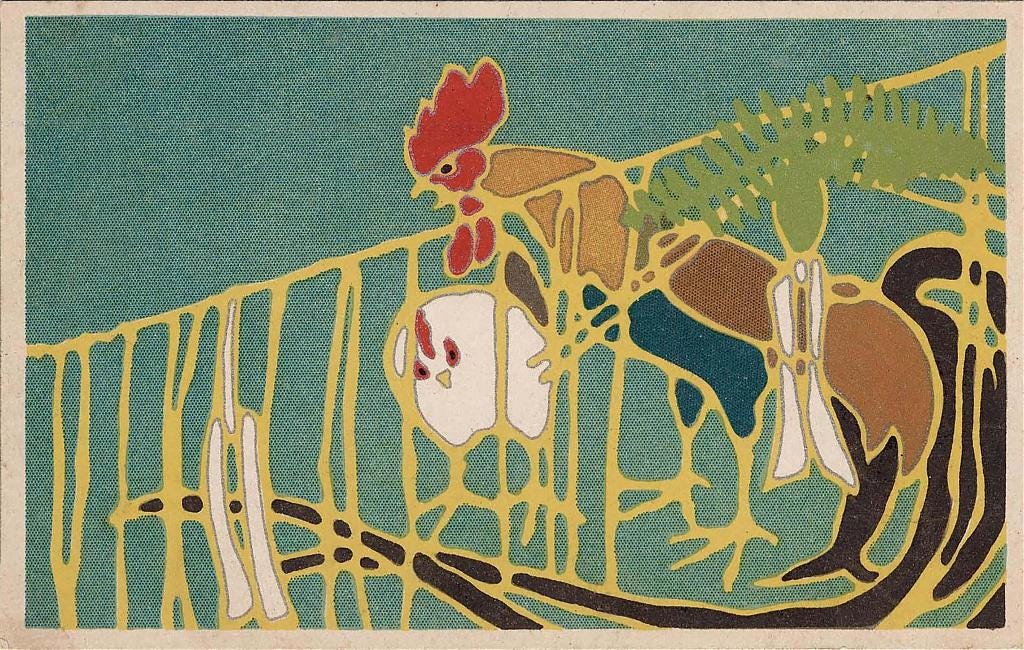

Nengajō’s major role during Japan’s New Year celebrations gives the impression that they have always existed and always will. However, the custom of sending postcards as New Year greetings only started in the 1870s, shortly after Japan’s modern postal service was established in 1871 (Meiji 4). The exclusive delivery service on New Year’s Day was launched in 1899 (Meiji 32).2
Initially, only official postcards without much design were allowed. But in 1900 it became possible to send privately made postcards. The following year there was an explosion of beautifully designed multi-colored nengajō. Soon, great design was of paramount importance and nengajō became an indispensable part of Japanese New Year celebrations.

The popularity was in great measure the result of new technologies. Around 1903 (Meiji 36), the lithography process had become widely spread in Japan. This made it possible to print very large numbers of beautiful color images. Inspired by the new possibilities, many companies experimented freely, often combining several production methods on a single card.
By fusing traditional culture with the new medium of postcards, printed with innovative new technologies, Japanese artists, designers, and printers created elaborate designs reflecting the latest trends and fashions.
The collaboration between publisher, artist, technician, and printer in modern printing was surprisingly close to that of traditional woodblock printing. This made the transition to modern techniques relatively smooth.3 As a result, the quality and quantity of production went through the roof.
The Japanese public loved it. They fell head over heels in love with with the colorful modern nengajō. In 1905 (Meiji 38), an estimated 110 million cards were printed.
Things heated up even more when during the 1910s schools began to teach about nengajō. Now, children started to send and exchange cards too. By the early Showa Period (1926–1989), many companies produced cards specifically for children.
By 1937 (Showa 12), the number of nengajō had rocketed to 850 million.
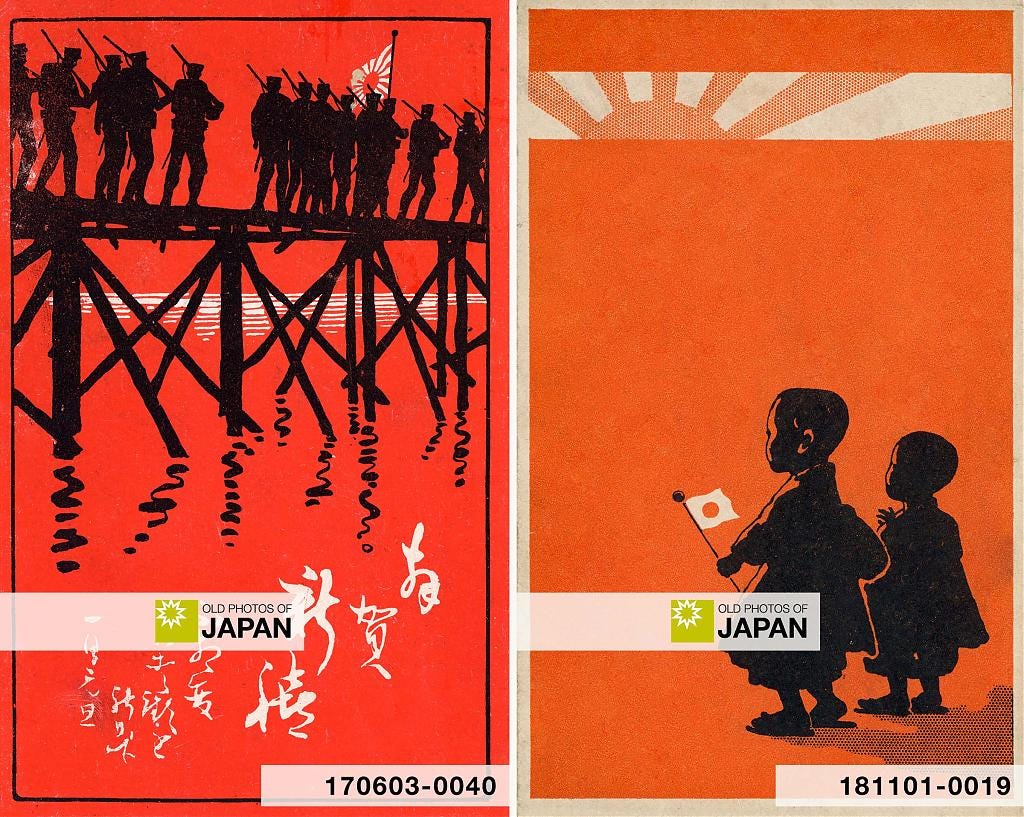
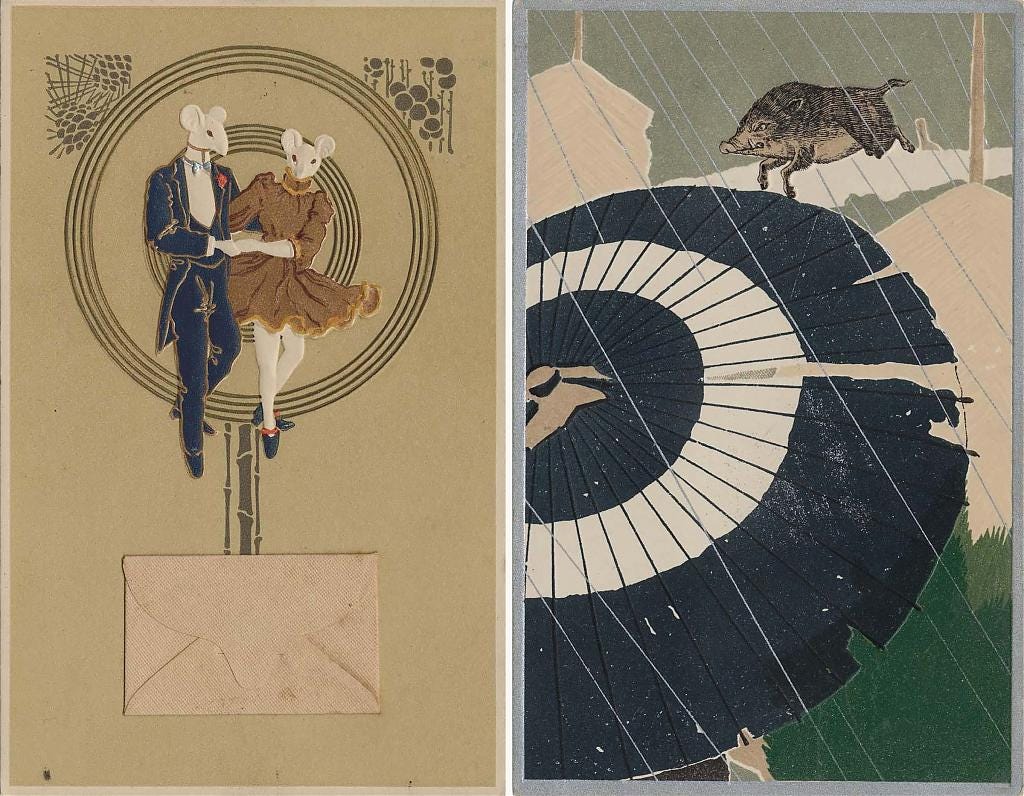

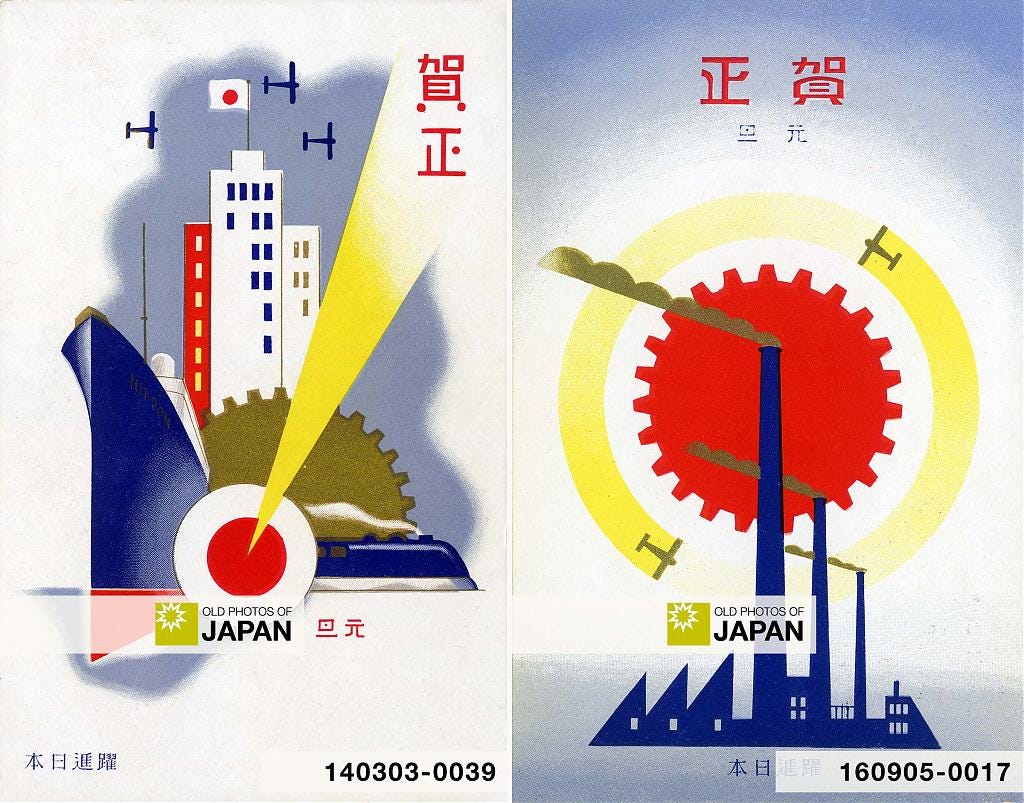
After 1937, however, sales collapsed. in 1940 (Showa 15), war conditions forced the halt of the special delivery, while the Japanese government asked people to refrain from sending New Year cards. The number plummeted to 94 million.4
The special delivery of New Year cards resumed in 1948 (Showa 23), three years after the end of WWII. The following year the Post Office launched the popular New Year cards with lottery numbers, allowing the recipients to win prizes.
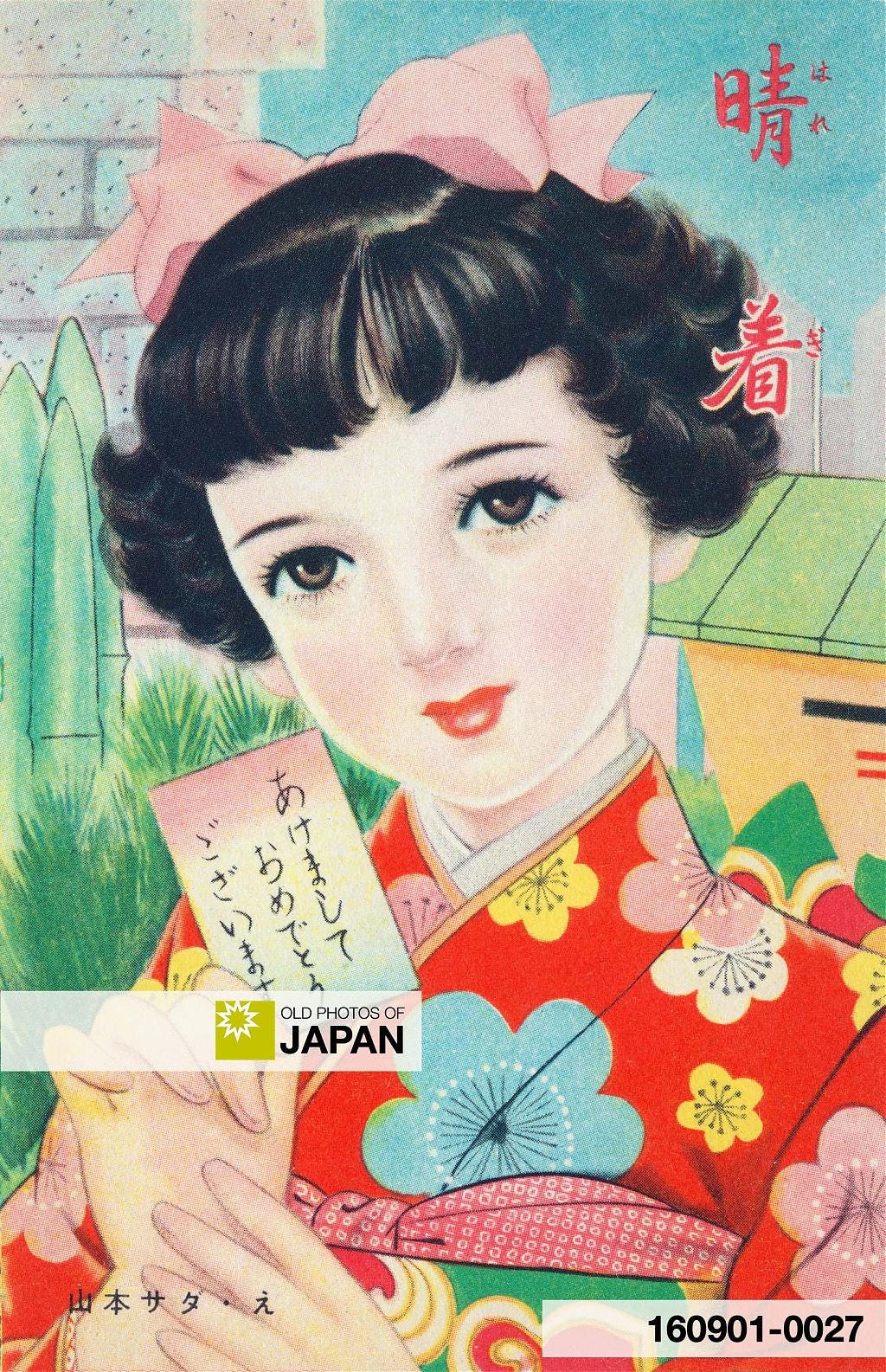
Once again, numbers shot up, reaching an astonishing 4.46 billion in 2004 (Heisei 16). But social media, stagnant salaries, and dramatic increases in costs of living have since devastated sales.
Especially the 30 percent rise of postal rates in 2024 (Reiwa 6) hit hard. The number of cards issued for New Year of 2025 nosedived to 1.07 billion, just slightly more than the figure of 1937. The estimated number of nengajō delivered on January 1, 2025 plunged 34 percent from the previous year. It was less than half the number of cards delivered on New Year’s Day 2022.5
Will nengajō be able to survive?
Related Article
The article below reproduces a book about Japanese New Year celebrations published in 1906 (Meiji 39) by Kobe based photographer Teijiro Takagi.
1900s • "The New Year in Japan"
A woman paints the face of a boy who lost in the card game of karuta. Photographer Teijiro Takagi shot this scene in Kobe in 1906 for a photo book about Japanese New Year celebrations.
Timeline Sources
JACAR Newsletter Number 42, December 27, 2023. Japan Center for Asian Historical Records. Retrieved on 2025-01-01.
The history of Japan Post from its establishment to today. Japan Post Holdings. Retrieved on 2025-01-03.
年賀状ミュージアム. Retrieved on 2025-01-01.
Earhart, David C. (2008). Certain Victory: Images of World War II in the Japanese Media. New York, London: M.E. Sharpe, 145 (New Year stamps, refraining from sending New Year cards).
(2018-11-20) Year of the Boared? Japanese Tire of Greeting Card Tradition. Nippon Communications Foundation (peak number). Retrieved on 2025-01-01.
(2025-01-01) Japan rethinks tradition of New Year’s cards as inflation persists. Kyodo News (number of cards in 2024). Retrieved on 2025-01-01.
Notes
This culture also determined the kanji used in the greetings. Nengajō generally used the same characters to wish a Happy New Year: 謹賀新年, 迎春 or 賀正.
JACAR Newsletter Number 42, December 27, 2023. Japan Center for Asian Historical Records. Retrieved on 2025-01-01.
The history of Japan Post from its establishment to today. Japan Post Holdings. Retrieved on 2025-01-03.
Wright, Joan (2004). Postcards Observed: Notes on Printing Techniques in Art of the Japanese Postcard. Boston: MFA Publications, 249.
明治・大正・昭和初期の辰年年賀状. 年賀状ミュージアム. Retrieved on 2025-01-03.
Nishimura Morse, Anne (2004). New Year’s Greetings in Art of the Japanese Postcard. Boston: MFA Publications, 235.
Fujita, Tomoya (2025-01-02), Number of New Year’s cards for delivery on Jan. 1 halved in 3 years, The Asahi Shimbun. Retrieved on 2025-01-03.


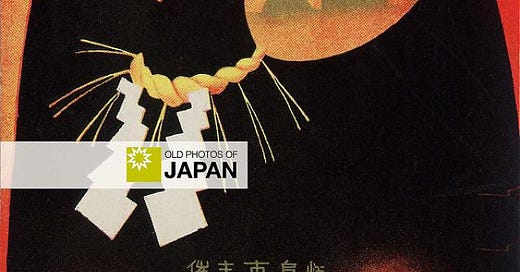





Thank you. I sent my nengajyou out just before New Year’s Eve.
Lovely. I love this tradition! I visited Japan last year from USA and accidentally bought way too many post card stamps and ending up spending a small fortune on mail during my trip. Money well spent because buying and sending post cards is a new hobby! It brings me and my friends/family so much joy and helps me connected to folks when I’m far away from them. I’m back in Japan sending postcards everyday to folks back home. By the New Year I will be living in Japan and may have to send nengajō of my own. ☺️